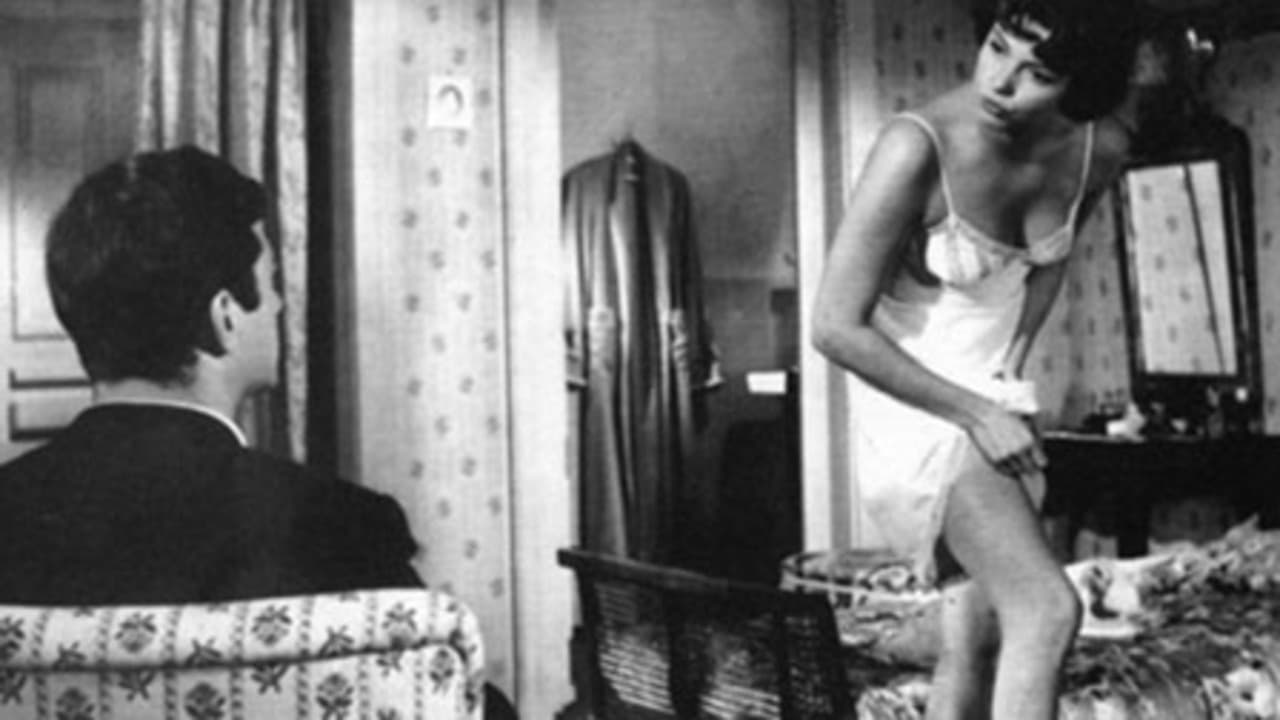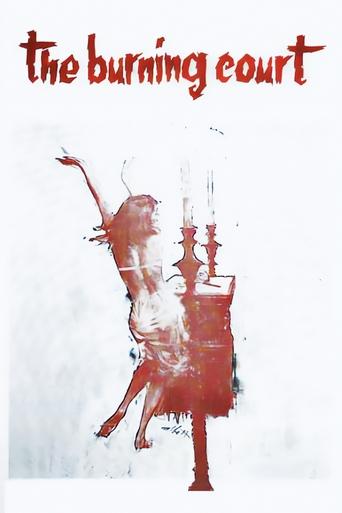

I wanted to like it more than I actually did... But much of the humor totally escaped me and I walked out only mildly impressed.
... View MoreA movie that not only functions as a solid scarefest but a razor-sharp satire.
... View MoreAmazing worth wacthing. So good. Biased but well made with many good points.
... View MoreLet me be very fair here, this is not the best movie in my opinion. But, this movie is fun, it has purpose and is very enjoyable to watch.
... View MoreTaking a look at writer/directing auteur Julien Duvivier's IMDb page after recently re- watching his amazing Film Noir Chair De Poule,I was delighted to find out that Duvivier had directed a Horror title,which led to me excitingly getting ready to enter Duvivier's court.The plot-The 18th century:As a woman and her 2 brothers are burnt at the stake for allegedly being involved in witchcraft.The woman uses her dying breath to put a curse on the lover who betrayed her,with the woman telling the man,that he and all future generations related to him,will experience horrible,violent deaths.The present:Paying a visit to his uncles mansion with his brother Marc, Stéphane Desgrez is caught by surprise,when a historian called Michel Boissard is invited to the mansion,with Boissard revealing that he is visiting the mansion,due to its "cursed" history being something which would be a perfect fit for his magazine.Knowing that Marc and Stephane have come down to pay him a friendly visit solely to get back in his will,the uncle tells nurse Myra that he does not want to see either of them.Taking Boissard on a tour of the mansion, Stephane becomes agitated when Boissard begins to ask him about urban legends related to letters related to the curse,which are said to be hidden in the mansion,that causes Stephane to put his foot firmly down and state that the urban legends are complete rubbish. Quietly meeting his uncle,Marc is asked by his uncle to keep Stephane as far away from him as possible.After eating a huge meal,Marc, Stephane and their wives decide to leave their uncle at the mansion,and attend a party being held that night.Later that night:Entering the mansion,a maid goes to the kitchen to gather the uncles nightly medicine.Being unable to find the medicine,the maid decides to pay a visit to the uncles bedroom,where she is left completely speechless,when she sees the ghost of the curse woman giving the uncle some burning medicine.View on the film:Showing the mansions shadow to cover up any positive attributes that the characters may have,co-writer/ (along with John Dickson Carr and Charles Spaak)director Julien Duvivier builds an extraordinary atmosphere which mixes gritty Gothic Horror with harsh Film Noir,as Duvivier shows the light attempting to brighten up the mansion,to be unrelentingly stark,with the light revealing the real monsters that inhabit the place.Slowly allowing for a thick mist to appear on the mansions horizons, Duvivier and cinematographer Roger Fellous expertly use quick tracking shots to unleash a tense Supernatural Horror mood,which leads to the characters and the viewer being unsure if a stranger seen from a distance is part of their imagination, or if it's the urban legend coming to life.For the screenplay,the writers show a tremendous skill in increasing the Horror and Film Noir pressure as the characters gradually sink into darkness,thanks to Marc and Stéphane playful arguments being shown to contain an unforgiving sting.Along with Marc and Stephane's relationship,the writers smartly use the Gothic Horror route as a way to give the title a strong mystery edge,which leads to the movie striking with a wonderfully cynical final note.Entering the movie with a straight lace shine (and backed by an icy score from Georges Auric) ,the great Jean-Claude Brialy shows the perfection on Marc's face to crack into a 1000 pieces,as the horror related to the family curse,leads to horrors that Marc attempts to hide,to rise from the dead. Initially appearing to be rather playful,the terrific Claude Rich shows Stéphane face to turn to stone,as he discovers Marc's hidden horrors,and looks into the burning court.
... View MoreIn retrospect we can speculate that Duvivier, a giant, reacted in a similar manner to Gulliver when the pygmies - in this case the spoiled brats responsible for the New Wavelet - attempted to subdue him. He had begun the sixties, which would turn out to be his last decade, by taking one of Truffaut's non-acting favorites and actually getting a performance out of him in 'Boulevard' and this time around he again used a couple of 'modern' actors in Scoob and Leaud. With Charles Spaak, a well-tried collaborator, he fashioned a hybrid of Mystery and Supernatural from a 'classic' John Dickson Carr novel and one which no admirer of Duvivier should miss. Clearly the 'problems' surrounding Black Jack had been left behind and here we get tantalizing glimpses of the old Master albeit paying for it via the abrupt ending. It's not first-rate Duvivier but even his second-rate leaves the New Wavistas dead in the water.
... View MoreAnother "victim" of the French Nouvelle Vague - a distinguished film director who found himself unceremoniously falling out of fashion within critical circles - was undoubtedly Julien Duvivier. Admittedly, his best work was behind him by then in such classic films like PEPE LE MOKO' (1937), UN CARNET DE BAL (1937; one of Michael Caine's favorite films!) and PANIQUE (1947; a rumored upcoming Criterion DVD release) but, if this obscure but richly rewarding suspenser is any indication, his cinematic and narrative skills did not desert him with age.Apparently, the original source novel by John Dickson Carr is a celebrated (and much more sophisticated) literary piece but even if this film adaptation (by renowned screenwriter Charles Spaak) constitutes an oversimplification, one cannot deny the fact that it is highly polished entertainment nevertheless. The plot ingeniously combines two prolific subgenres in the horror film lexicon, "the old dark house" and "the witch's curse", dealing as it does with an 18th Century witch being deceived by her lover - a policeman dressed as a monk! - thereby unleashing a vengeful curse on his ancestors which decrees that every subsequent head of the family dies a violent death. This event is not depicted in the film but merely referred to throughout and we immediately jump into the present with a female ancestor of the witch - played by the beautiful Edith Scob from Georges Franju's EYES WITHOUT A FACE (1959), here with her hair bleached blonde - being invited with her novelist husband to a château in the country which, as it happens, is owned by the ancestors of the witch's duplicitous lover. The latter are a despicable bunch of amoral opportunists with the two young heirs greedily awaiting the demise of their cantankerous 75-year old uncle which could occur at any moment. One night, every member of the household (including his nurse) desert the old man for their own egotistical purposes and Scob and her husband volunteer to stay home and watch over him themselves... Apart from the illustrious trio in the behind-the-camera personnel (Duvivier, Spaak and music composer Georges Auric), the film boasts atmospheric lighting by Roger Fellous and a cast of willing performers: the afore-mentioned Scob, Jean-Claude Brialy (as the more level-headed of the two heirs), Claude Rich (as his worthless playboy brother), Nadja Tiller (as the lovely nurse who, ultimately, is not as loyal as she makes out to be), etc. There are elements of the supernatural (when the murderer is seen passing through the walls of a closed room by the housekeeper or when the body vanishes from the interred coffin and reappears sitting in a chair in the family chapel) and black comedy (when the mourners at the funeral waltz around the still open coffin at the deceased's own request) involved which only add to the fun. It would be a mistake to reveal more of the twists and turns the plot takes in the second half of the film - which also introduces the character of a no-nonsense police inspector - but I'll say only that it all ends rather too abruptly perhaps (immediately after the ironic final revelation) leaving the fate of some of the major characters pretty much unresolved.
... View MoreWhen this movie came out, a publisher brought out a tie-in edition of the novel, with a nude dancer on the cover. For this reason I'd been looking forward to the movie; but it never appeared, and I'm only seeing it on video now. And it's okay: not worth waiting twenty years for, but okay. Its prefatory sequence promises a story about a family curse laid down by an ancestor who was burned as a witch. But there's no real curse and no real witch; this is just a red herring. The story isn't a horror story but a murder mystery with spooky overtones. As a mystery, it starts slowly but gains in interest as it goes. It's set in a French château, where a family gathers, officially to hold a ball, but in effect mainly as an excuse for squabbling. One of them turns up dead; the only witness to the crime swears to an event that seems impossible; presently the body presently vanishes. In the absence of a detective as the leading character, the script has no solid structure: it starts with one pair of characters and ends with another, the motives for the characters' actions, other than the murder, are obscure, and the surprise ending seems to belong to another movie. But the direction kept me intrigued most of the way, the black-and-white photography is attractive, and the actors are good enough, as far as can be judged from the dubbing (which is not bad, for dubbing). It's okay--not not-okay-okay, but really okay.Only, I'm still looking for that nude dancer from the paperback, because there are none in the movie. And no burning court, either.Oh, well.
... View More